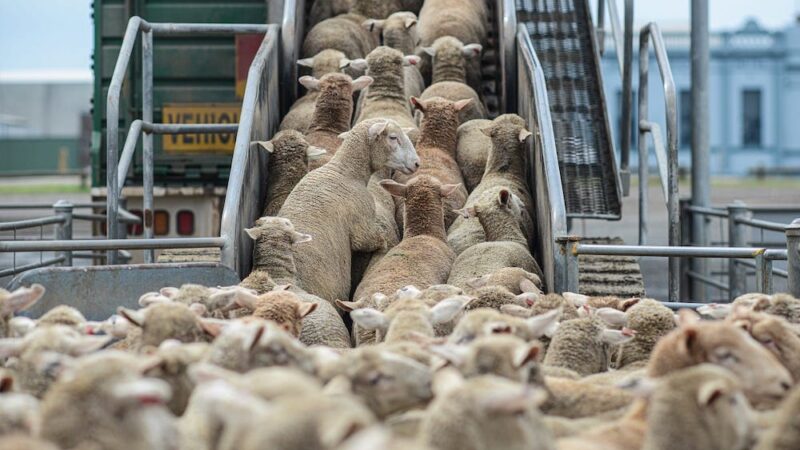NSW Farmers members from every corner of the state can connect and collaborate on a…
NSW Farmers welcomes National Grain Freight Strategy

A national roadmap to boost productivity, cut costs, and strengthen Australia�s grain supply chain.
NSW Farmers has welcomed the latest National Grain Freight Strategy, which promises a realistic and workable road map for the government to improve Australia’s position in the global market.
The GrainGrowers strategy, launched last week, aimed to boost the productivity and efficiency of the supply chain, reducing costs and providing savings for Australian growers.
According to GrainGrowers, a record winter crop production of 65.7 million tonnes was moved from paddocks across regional Australia in 2022-23, by either road or rail to port for export or to domestic markets. The expense of moving grain was the single largest cost of production, according to CSIRO modelling, which highlighted transport costs of $2.1 billion per annum.
GrainGrowers Chair Rhys Turton said Australia�s ability to compete on the global stage was not just determined by what farmers grew, but also how efficiently and effectively they could get their grain to market.
��For context, prior to the conflict between Russia and Ukraine, both countries’ production costs were $70-$120 AUD less than Australia�s,� Mr Turton said.

A report titled �Connecting the Dots�, commissioned by GrainGrowers, identified crucial points in the supply chain. In the wake of the report, more than 40 stakeholders were consulted to gain extra input into the issues. Mr Turton said collaborating with industry stakeholders and policymakers meant they were working towards a more efficient and resilient grain supply chain.
�While growers were at the heart of the strategy, with a key focus on the issues that impacted transporting grain off-farm such as local roads and bridges, it was vital the approach reflected the views of the broader supply chain,� he said.
According to NSW Farmers Grains Committee Chair Justin Everitt, it was an issue that farmers and the Grains Research Development Corp (GRDC) had been hoping to resolve.
�It’s definitely an issue that NSW Farmers and GRDC has been pushing for a very long time, especially with our call for an ACCC investigation of the grain supply chain. So, we have been advocating for this, and it is great to see GrainGrowers taking action,� Mr Everitt said.
�More players in the game means more competition, and that is always beneficial. It ultimately puts more money back into growers’ pockets, which is something we definitely want to see.�
The action plan
The framework of the strategy was based on the following goals:
- Promote competition and attract new entrants to the supply chain;
- Expand scalable capacity within the supply chain;
- Simplify and harmonise regulations;
- Strengthen supply chain resilience;
- Foster new technologies and innovation;
- Improve freight sustainability.
The new approach was seen as a solid action plan centred on road funding, road regulation, bridges, rail, ports, and freight decarbonisation. It also detailed collaborative methods for government and industry stakeholders, ensuring Australia’s grain supply chain kept its global competitiveness.
When it came to new technologies and innovation in the industry, Mr Everitt said technological advancements were always welcome; however, the focus had to be on addressing the existing issues first, particularly in freight.
�For example, our roads need significant improvements. There is no point in having advanced new equipment if our roads are just going to damage it,� Mr Everitt said.
�Road funding and regulation are crucial. We need a well-maintained national road system, especially in regional and rural areas where councils can’t keep up with maintenance.
�The major highways might have been okay, but often the last few kilometres to the farm gate can be the worst part of your drive. Recently, my last 15km drive in the truck was so rough, I had to hold on with both hands. It was a rough ride.�
Key Components
The action plan’s key components addressed issues including:
Road funding: Immediate actions included developing state-based grain freight strategies, increasing funding for the Roads to Recovery Program, allocating funds to critical grain freight routes through the Infrastructure Investment Program, and prioritising the National Freight and Supply Chain Strategy within the National Cabinet.
Road regulation: The adoption of High Productivity Freight Vehicles (HPFV) was hindered by inadequate regulations and lengthy permit processes. Immediate actions included streamlining HPFV regulations, improving safety, reducing bureaucratic hurdles, and providing more resources to local councils for road access decisions.
Bridges: Ageing bridge infrastructure hindered HPFV operation, with many councils unable to afford replacements, imposing load limits. Immediate action was needed to fund bridge upgrades on high-volume routes and provide targeted funding for cross-border bridges.

Rail: Improving rail grain freight reduced carbon emissions and efficiently transported grain long distances. Immediate actions included funding upgrades for critical rail freight corridors, aligning rolling stock access agreements, auditing infrastructure standards for standardisation and expansion, and co-funding industry upgrades for rail sidings and loading capacity.
Ports: A well-functioning port system was vital for exporting grain internationally, but Australian ports faced significant challenges due to trade growth. Immediate needs included a nationally coordinated approach to port regulation for improved consistency and coordination and government monitoring of port productivity.
Freight decarbonisation: Australian grain freight required a nationally coordinated and phased transition to low-emission pathways. Immediate steps included implementing a National Transport and Infrastructure Net Zero Roadmap and Action Plan, incorporating decarbonisation into the National Freight and Supply Chain Strategy, developing a National Modal Shift Scheme to boost rail freight for grain, and exploring domestic production of canola-based biofuels.
Mr. Everitt commended GrainGrowers for doing a good job in addressing the key issues.
�It is a good pathway forward, but our wish list would probably never end. The grain industry has fallen so far behind that it will take a long time to catch up,� Mr Everitt said.
If you enjoyed reading about the National Grain Freight Strategy, you may like to read about new safety guidelines for livestock transport.








